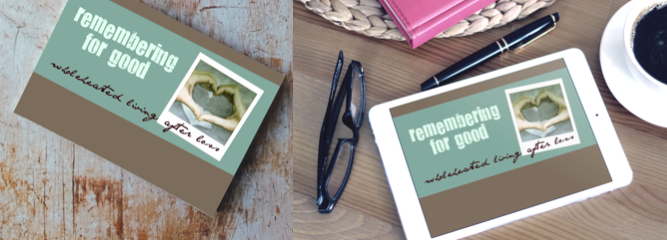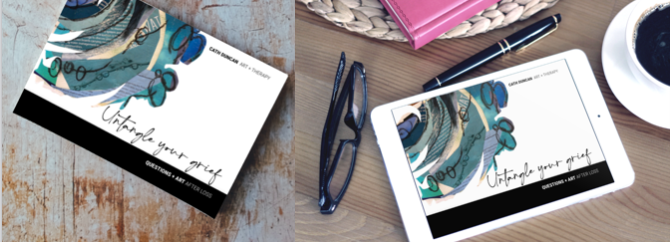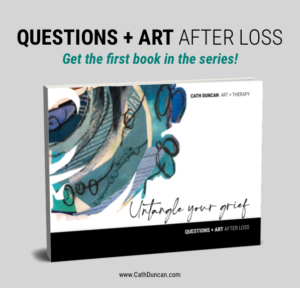As I look back over the past year since our daughter died in-utero, I was at first surprised by the things that made the most difference to my health, sense of wellbeing and hope. 5 Practices stood out way above everything else, but we didn’t learn about these 5 practices in my Social Work studies. Yet my experience has been that when we include these 5 simple and inexpensive practices in our daily lives after trauma and loss, our natural resilience and resourcefulness is quickly restored. What’s interesting is that they’re not “special” practices that are relevant to only people who are grieving. These 5 practices are good for everyone and they synergistically support both your emotional and physical health at the same time.
But there’s a big problem… our lifestyles in the modern Western world don’t leave much space for these practices, and so we obstruct our natural ability to self-heal in significant ways.
Let me explain…
Always needing to get somewhere, harder, faster, more
Open up your calendar and have a look at how you’re spending your time. For most of us, our lives are too busy and over-scheduled as we chase incessant productivity and progress and respond to all the “urgent” demands being made of us. At the end of the day, our attention, energy and time is finite, so what are we all squeezing out as we try to cram more productivity into our days? The first things to get squeezed out of our lives are usually:
- Adequate sleep
- Conscious, healthy nutrition
- Regular movement
- Deep community and intimacy
- Service to others
We let these 5 practices go because of the pervasive belief in our societies that these things are time-consuming “nice to haves” that we will get to after we’ve done the stuff that’s urgent. Of course there’s so much that’s demanding our urgent attention everyday that we hardly ever get around to doing these important practices that ensure our health and happiness, build our resilience and support our natural self-healing during and after challenging experiences.
It took the loss of our daughter for me to understand the shortness and preciousness of life and the importance of these 5 simple practices in healing and creating a resilient, healthy, happy and meaningful life. If you’re letting these 5 practices slide as you ping-pong through your day in reaction to all the demands being made of you, I’m here to ask you to stop for a moment and reflect on the damage you’re doing to your physical and emotional well-being and the opportunities for healing, connection, meaning and happiness that you’re giving up.
1. Heal In Your Sleep
We stay up later and get up earlier so we can fit more into our schedules. We’re using medications, caffeine and stimulants to force our bodies to sleep and wake, rather than following our natural bio-rhythms. When we’re busy, stressed and tired, we’re more likely to feel anxious and stressed, to eat poorly, and to make poor decisions and mistakes – all of which has a negative impact on our emotional, physical, social and work health, adds stress to our lives and gives us even more loss and grief to deal with.
We need at least 7 hours of sleep a night, but energy-expert, Tony Schwartz recommends 9 hours a night and an afternoon nap. Daniel Coyle’s research for his book, “The Talent Code,” found that the most talented people in the world sleep more each night and commonly nap in the afternoons because sleeping helps us to integrate new learning and build solid, reliable neural connections. If you’re needing to heal physically or emotionally, you’ll probably need even more sleep than that. All grieving and healing is learning and if you honor your body’s needs and allow yourself to sleep more, you’ll learn and heal more quickly.
2. Move Your Body
We sit stagnant at our desks all day, neglecting all our resourcefulness from the neck down and letting the effects of stress erode our physical and emotional well-being. When we’re going through hardship or grieving, stress produces cortisol, which turns to lactic acid if we don’t move our bodies to burn it up. Lactic acid causes cramped muscles and stiffness and without movement, we literally “embody” and store our emotional pain as stiffness and constriction in our bodies. We need to move our bodies regularly in order to release both the physical and emotional effects of stress and trauma.
My regular walks that have helped me to center myself emotionally, release stress and rebuild my physical strength as I grieve and heal are one of the reasons why I committed to walking in the 100km Kidney March.
3. Build Your Community
So much of our socializing these days is actually networking – meeting with other people with an agenda, to get them on board to help us make more progress. And since everyone is now a publisher, we’re all concerned with our “personal brands” and consumed with designing and marketing our images and reaching as many people as we can, rather than just being authentic with each other and building intimate communities.
Many studies show that the primary factor in creating resilience and enabling us to “bounce back” from challenging or traumatic events is social support and quality relationships. Happiness researcher, June Gruber says, “The strongest predictor of happiness is not money, or external recognition through success or fame… It’s having meaningful social relationships. That means the best way to increase your happiness is to stop worrying about being happy and instead divert your energy to nurturing the social bonds you have with other people.”
The social support that these studies are referring to isn’t the support of professional counselors or formal group therapy. Professional counseling can be very helpful, but first prize is for us all to have everyday relationships that can offer us compassionate listening and practical support.
I know what it’s like to feel vulnerable because of loss, to feel the impulse to withdraw and hide my grief from others, and to want to protect myself from ever loving (and risking losing) again. While it can be healthy to take more time to slow down and be by yourself when you need to heal, withdrawal can lead to shame, disconnection and loneliness that adds to our losses and cuts us off from the healing effects of community. I’ve chosen to stay in community and to share my healing journey with others and this has proven to be incredibly healing for me. The wonderful part of it is that people I’ve shared my journey with are telling me that my sharing has helped them to heal and grow too.
4. Serve Each Other
There are more people in the world than ever before, but there’s still so much loneliness and disconnection because we’re too tired, stressed, busy and preoccupied with building our individual forts to make real connections with each other. And it’s a pervasive cycle – in our individualism and loneliness, there’s even more pressure to work harder and build our forts because we don’t have the resourcefulness of a community that we can depend on.
My commitment to walk the 100km Kidney March and raise funds kidney research through our Kidney Raffle helped me to appreciate for the first time the powerful healing effect of serving others. It shifted my attention from my own hardships and losses and opened up my perspective and vision. It connected me to other people’s resourcefulness and support and helped me to notice more opportunities for solving my own problems. Serving others has also helped me to see what other people are struggling with and living through, placing my losses in perspective and reminding me of the resilience of the human spirit. Serving others has re-connected me to hope and given me purpose and meaning after months and months of feeling like nothing mattered after we lost our daughter.
Serving others doesn’t have to be service with a capital S. It’s the little things that matter. Checking in on a friend who’s dealing with difficult stuff, offering to mind your neighbor’s children so they can have a date night, making food for each other, having those conversations where you do the listening instead of the talking.
Daily Practice, Prioritizing And Permission-Giving
One of the most destructive elements of our faster, harder, sooner culture is the pervasive belief in quick fixes and magical cures. These 5 practices are not quick fixes. They’re called “practices” because we’re never going to complete or perfect them, and we can’t store them up for the future. They need to be practiced daily.
These 5 practices are not difficult or complex to master. But they’re difficult to prioritize because they’re not urgent and they’re so different to the way our priorities are stacked in the developed world. Your greatest obstacle will be the struggle to give yourself permission to make these 5 practices your priority.
Don’t get disheartened if you find yourself having to give yourself fresh permission to prioritize these practices everyday. It’s like brushing your teeth – we don’t get disheartened that we have to do it daily. We know that the plaque builds up everyday, so we come back to brush our teeth again everyday. Everyday we get exposed to multiple messages telling us that we should be going faster, harder, cramming more in. So you’re probably going to need daily permission to go against the grain and prioritize these 5 practices to enable your natural self-healing. But as your daily practice turns into weeks and months and years, you’ll be amazed at the resilience you’ll build, the time you’ll save and the progress you’ll make in the long-run because of the way that these 5 practices will support you to be happier, clearer, more connected, and more creative.
Would you like guidance to explore and heal your grief?
I’ve put together a 35-page grief “workbook” for you; an introduction to Remembering For Good and living wholeheartedly after loss. Learn more about the Remembering For Good grief workbook.
The first book in the QUESTIONS + ART AFTER LOSS series, Untangle Your Grief is a beautiful 65-page book of artful questions and creativity-sparking art prompts to help you to create meaning, belonging, and hope after loss.



